Hindu Theology
Description Theological ClassificationsHinduism—A Fellowship Of Faiths And A Federation Of Philosophies Hindu theology is mainly the study and doctrine of the worship and adoration of six forms of the Godhead as Ganesa, Devi (Durga, Lakshmi, Sarasvati), Siva, Vishnu, Surya and Skanda. These aspects of divine worship are known as Shanmatas, or the sixfold religious practice of the Hindus. Hinduism is extremely catholic, liberal, tolerant and elastic. This is the wonderful feature of Hinduism. A foreigner is struck with astonishment when he hears about the diverse sects and creeds of Hinduism. But these varieties are really an ornament to Hinduism. They are not certainly its defects. There are various types of minds and temperaments. So there should be various faiths also. This is but natural. This is the cardinal tenet of Hinduism. There is room in Hinduism for all types of souls—from the highest to the lowest—for their growth and evolution. The term Hinduism is most elastic. It includes a number of sects and cults, allied, but different in many important points. Hinduism has, within its fold, various schools of Vedanta; Vaishnavism, Saivism, Saktism, etc. It has various cults and creeds. It is more a League of Religions than a single religion with a definite creed. It accommodates all types of men. It prescribes spiritual food for everybody, according to his qualification and growth. This is the beauty of this magnanimous religion. This is the glory of Hinduism. Hence there is no conflict among the various cults and creeds. The Rig-Veda declares: “Truth is one; sages call it by various names—Ekam Sat Viprah Bahudha Vadanti.” The Upanishads declare that all the paths lead to the same goal, just as cows of variegated colours yield the same white milk. The Lord Krishna says in the Gita: “Howsoever men approach Me, even so do I welcome them, for the path men take from every side is Mine.” All diversities are organised and united in the body of Hinduism. It is rather difficult to answer the question: “What is Hinduism?” It is a fellowship of faiths. It is also a federation of philosophies. It provides food for reflection for the different types of thinkers and philosophers all over the world. All sorts of philosophy are necessary. What appeals to one may not appeal to another, and what is easy for one may be difficult for another. Hence the need for different standpoints. All philosophies of Hinduism are points of view. They are true in their own way. They take the aspirant step by step, stage by stage, till he reaches the acme or the pinnacle of spiritual glory. Sanatana-Dharmists, Arya-Samajists, Deva-Samajists, Jainas, Bauddhas, Sikhs and Brahma-Samajists are all Hindus only, for they rose from Hinduism, and emphasised one or more of its aspects. The Hindus are divided into three great classes, viz., Vaishnavas who worship the Lord as Vishnu; Saivas who worship the Lord as Siva; and Saktas who adore Devi or the Mother aspect of the Lord. In addition, there are the Sauras, who worship the Sun-God; Ganapatyas who worship Ganesa as supreme; and Kaumaras who worship Skanda as the Godhead.
The VaishnavasSri Sampradayins The Vaishnavas are usually distinguished into four principal
Sampradayas or sects. Of these, the most ancient is the Sri Sampradaya
Vedanta Desika, a follower of Ramanuja, introduced some reform in the Vaishnava faith. This gave rise to the formation of two parties of Ramanujas, one called the Northern School (Vadagalai) and the other the Southern School (Tengalai). The Tengalais regard Prapatti or self-surrender as the only way to salvation. The Vadagalais think that it is only one of the ways. According to them, the Bhakta or devotee is like the young one of a monkey which has to exert itself and cling to its mother (Markata-Nyaya or Monkey Theory); whereas, according to the Southern School, the Bhakta or devotee is like the kitten which is carried about by the cat without any effort on its own part (Marjala-Nyaya or Cat-hold Theory). The Northern School accept the Sanskrit texts, the Vedas. The Southerners have compiled a Veda of their own called ‘Nalayira Prabandha’ or ‘Four Thousand Sacred Verses’, in Tamil, and hold it to be older than the Sanskrit Vedas. Really, their four thousand verses are based on the Upanishad portion of the Vedas. In all their worship, they repeat sections from their Tamil verses. The Vadagalais regard Lakshmi as the consort of Vishnu. Herself infinite, uncreated and equally to be adored as a means (Upaya) for release. The Tengalais regard Lakshmi as a created female being, though divine. According to them, she acts as a mediator or minister (Purushakara), and not as an equal channel of release. The two sects have different frontal marks. The Vadagalais make a simple white line curved like the letter U to represent the sole of the right foot of Lord Vishnu, the source of the Ganga. They add a central red mark as a symbol of Lakshmi. The Tengalais make a white mark like the letter Y which represents both the feet of Lord Vishnu. They draw a white line half down the nose. Both the sects brand the emblems of Vishnu—the discus and the conch—on their breasts, shoulders and arms. The Tengalais prohibit their widows from shaving the head. The usual surnames of the Ramanuja Brahmins are Aiyangar, Acharya, Charlu and Acharlu.
Ramanandis The followers of Ramananda are the Ramanandis. They are well-known in upper Hindusthan. They are a branch of the Ramanuja sect. They offer their worship to Lord Rama, Sita, Lakshmana and Hanuman. Ramananda was a disciple of Ramanuja. He flourished at Varanasi about the beginning of the fourteenth century. His followers are numerous in the Ganga valley of India. Their favourite work is the ‘Bhakti-Mala’. Their sectarian marks are like those of the Ramanujas. The Vairagis are the ascetics among the Ramanandis.
Vallabhacharins Or Krishna Sampradayins
The mark on the forehead consists of two red perpendicular lines meeting in a semicircle at the root of the nose and having a round spot of red between them. The necklace and rosary are made of the stalk of the Tulasi (holy Basil). The great authority of the sect is the Srimad-Bhagavata as explained in the Subodhini, the commentary thereon of Vallabhacharya. The members of the sect should visit Sri Nathdvara, a holy shrine, at least once in their lives.
The Chaitanyas This sect is prominent in Bengal and Orissa. The founder, Chaitanya
Mahaprabhu or Lord Gouranga, was born in 1485. He was regarded as an
incarnation of Lord Krishna. The Chaitanyas worship Lord Krishna as the Supreme Being. All castes are admissible into the sect. The devotees constantly repeat the Name of Lord Krishna. Chaitanya’s Charitamirita by Krishna Das is a voluminous work. It contains anecdotes of Chaitanya and his principal disciples and the expositions of the doctrines of this sect. It is written in Bengali. The Vaishnavas of this sect wear two white perpendicular streaks of sandal or Gopichandana (a kind of sacred earth) down the forehead uniting at the root of the nose and continuing to near the tip. They wear a close necklace of small Tulasi beads of three strings.
The Nimbarkas The founder of this sect is Nimbarka or Nimbaditya. He was originally
named Bhaskara Acharya. He is regarded as an incarnation of the Sun-God
(Surya). The followers The followers have two perpendicular yellowish lines made by Gopichandana earth drawn from the root of the hair to the commencement of each eyebrow and there meeting in a curve. This represents the footprint of the Lord Vishnu. The Nimbarkas or Nimavats are scattered throughout the whole of upper India. They are very numerous around Mathura. They are also the most numerous of the Vaishnava sects in Bengal.
The Madhvas
The Gurus of the Madhva sect are Brahmins and Sannyasins. The followers bear the impress of the symbols of Vishnu upon their breasts and shoulders. They are stamped with a hot iron. Their frontal mark consists of two perpendicular lines made with Gopichandana and joined at the root of the nose. They make straight black line, with a charcoal from incense offered to Krishna, which terminates in a round mark made with turmeric. The Madhvas are divided into two classes called the Vyasakutas and the Dasakutas. They are found in Karnataka. Truthfulness, study of scriptures, generosity, kindness, faith and freedom from envy form the moral code of Madhvas. They give the Lord’s Names to their children (Namakarana), and mark the body with His symbols (Ankana). They practise virtue in thought, word and deed (Bhajana).
Radha Vallabhis Radha Vallabhis worship Krishna as Radha-Vallabha, the Lord or Lover of Radha. Harivans was the founder of this sect. Seva Sakhi Vani gives a detailed description of the notion of this sect and more of their traditions and observances. Charana Dasis, Dadu Panthis, Hari Chandis, Kabir Panthis, Khakis, Maluk Dasis, Mira Bais, Madhavis, Rayi Dasis, Senais, Sakhi Bhavas, Sadma Panthis, are all Vaishnava sects.
The SaivasSmarta Brahmins Of The South
The Saiva Brahmins of the Tamil Nadu have their title Aiyer. They are called Smartas. They all wear three horizontal lines of Bhasma or Vibhuti (holy ash) on their forehead. They all worship Lord Siva. The different sects are: 1. Vadamas: Vada Desa Vadamas, Chola Desa Vadamas and Inji Vadamas; 2. Brihatcharanam: Mazhainattu Brihatcharanam, Pazhamaneri Brihatcharanam, Milaghu Brihatcharanam and Kandramanikka Brihatcharanam; 3. Vathimars; 4. Ashtasahasram; 5. Choliyas: Otherwise called Pandimars and inhabitants of Tiruchendur; and 6. Gurukkal: A sub-sect of Vadamas not recognised as one amongst them and whose duties are to worship at temples. They are also known by the name of Pattar in southern districts of Madras. These are different from Archaks. Archaks belong to any of the above sub-sects and intermarry with persons of other professions, but not Gurukkal or Pattar. While Gurukkal is used only for Saivites, Pattar and Archak are used for Vaishnavites also.
Saiva Brahmins Of Malabar 1. Nambudiri, 2. Muse and 3. Embrantiri.
Saiva Brahmins Of Bengal l. Chakravarti, 2. Chunder, 3. Roy, 4. Ganguli, 5. Choudhury, 6. Bisvas, 7. Bagchi, 8. Majumdar and 9. Bhattacharji.
Saiva Brahmins Of Karnataka 1. Smarta, 2. Haviga, 3. Kota, 4. Shivalli, 5. Tantri, 6. Kardi and 7. Padya.
Telugu Smartas 1. Murukinadu, 2. Velanadu, 3. Karanakammalu, 4. Puduru Dravidis, 5. Telahanyam, 6. Konasimadravidi and 7. Aruvela Niyogis.
Lingayats
Other Saiva Sects Akas Mukhis, Gudaras, Jangamas, Karalingis, Nakhis, Rukharas, Sukharas, Urdhabahus, Ukkaras are all Saiva sects.
The SaktasThe Saktas are worshippers of Devi, the Universal Mother. Dakshinis, Vamis, Kancheliyas, Kararis are all Sakta sects.
MiscellaneousThe Sauras adore the Sun, the Ganapatyas adore Ganesa, and the Kaumaras adore Skanda. The non-Brahmins of South India are Naidu, Kamma Naidu, Cherty, Mudaliar, Gounder, Pillai, Nair, Nayanar and Reddy. Nanak Shahis of seven classes (viz., Udasis, Ganjbakshis, Ramrayis, Sutra Shahis, Govinda Sinhis, Nirmalas, Nagas), Baba Lalis, Prana Nathis, Sadhus, Satnamis, Siva Narayanis are other miscellaneous sects.
The Arya Samajists And The Brahma Samajists
The Brahma Samaj was founded originally by Raja Ram Mohan Roy, early in the nineteenth century. The Brahma Samajists do not perform idol-worship. Keshab Chandra Sen introduced some changes in the year 1860. There are now two branches within the Samaj, viz., Adi Brahma Samaj which holds to the tenets laid down by Raja Ram Mohan Roy and the Sadharana Brahma Samaj which is a little modern and which follows Keshab Chandra Sen more closely. The Samaj has followers in Bengal.
Sadhus And SannyasinsSalutations unto the ancient Rishis, seers, saints, Paramahamsa Sannyasins and Sadhus, who are the repositories of divine knowledge and wisdom and who guide the destiny of the world in the past, present and future. Every religion has a band of anchorites who lead the life of seclusion and meditation. There are Bhikkus in Buddhism, Fakirs in Mohammendanism, Sufistic Fakirs in Sufism, and Fathers and Reverends in Christianity. The glory of a religion will be lost absolutely if you remove these hermits or Sannyasins or those who lead a life of renunciation and divine contemplation. It is these people who maintain or preserve the religions of the world. It is these people who give solace to the householders when they are in trouble and distress. They are the messengers of the Atman-knowledge and heavenly peace. They are the harbingers of divine wisdom and peace. They are the disseminators of Adhyatmic science and Upanishadic revelations. They heal the sick, comfort the forlorn and nurse the bedridden. They bring hope to the hopeless, joy to the depressed, strength to the weak and courage to the timid, by imparting the knowledge of the Vedanta and the significance of the ‘Tat Tvam Asi’ Mahavakya.
Dasanama Sannyasins Sanaka, Sanandana, Sanat-Kumara and Sanat-Sujata were the four mind-born sons of Lord Brahma. They refused to enter the Pravritti Marga or worldly life and entered the Nivritti Marga or the path of renunciation. The four Kumaras were the pioneers in the path of Sannyasa. Sri Dattatreya also is among the original Sannyasins. The Sannyasins of the present day all descendants of the four Kumaras, Dattatreya and Sankaracharya. Sri Sankaracharya, regarded as an Avatara of Lord Siva and the eminent exponent of Kevala Advaita philosophy, established four Mutts—one at Sringeri, another at Dvaraka, a third at Puri and a fourth at Joshi-Mutt in the Himalayas, on the way to the Badarinarayana shrine. Sri Sankara had four Sannyasin disciples, viz., Suresvara, Padmapada, Hastamalaka and Totaka. Suresvara was in charge of Sringeri Mutt, Padmapada was in charge of Puri Mutt, Hastamalaka was in charge of Dvaraka Mutt and Totaka was in charge of Joshi-Mutt. The Sannyasins of Sringeri Mutt, the spiritual descendants of Sri Sankara and Suresvaracharya, have three names, viz., Sarasvati, Puri and Bharati. The Sannyasins of the Dvaraka Mutt have two names, viz., Tirtha and Asrama. The Sannyasins of the Puri Mutt have two names, viz., Vana and Aranya. The Sannyasins of the Joshi-Mutt have three names, viz., Giri, Parvata and Sagara. The Dasanamis worship Lord Siva or Lord Vishnu, and meditate on Nirguna Brahman. The Dandi Sannyasins, who hold staff in their hands, belong to the order of Sri Sankara. Paramahamsa Sannyasins do not hold staff. They freely move about as itinerant monks. Avadhutas are naked Sannyasins. They do not keep any property with them. The Sannyasins of the Ramakrishna Mission belong to the order of Sri Sankara. They have the name Puri. Then, there are Akhada Sannyasins, viz., Niranjani Akhada and Jhuna Akhada. They belong to the order of Sri Sankara. They are Dasanamis. They are found in the Uttar Pradesh State only. Rishikesh and Haridwar are colonies for Sannyasins. Varanasi also is among the chief abodes of Sannyasins.
Saivas In South India, there are Tamil Sannyasins who belong to the Kovilur Mutt, Thiruvavaduthurai and Dharmapuram Adhinams. They do not belong to the Sri Sankara order. They are Saivas.
Nagas
Udasis
Vairagis A Vairagi is one who is devoid of passion. Vairagis are Vaishnavas. They worship Lord Rama, Sita and Hanuman. They read the Ramayana of Tulasidas. The mendicant Vaishnavas of the Ramanandi class are the Vairagis. This ascetic order was instituted by Sri Ananda, the twelfth disciple of Ramananda.
Rama Sanehis The founder of this order was Ramcharan who was born in the year 1718 in a village near Jaipur in Rajasthan. The Rama Sanehi mendicants are of two classes, viz., the Videhis who are naked and the Mohinis who wear two pieces of cotton cloth dyed red in ochre. Their monastery is in Shahapur in Rajasthan. The Rama Sanehi sect has the largest following in Mewar and Alwar. They are found also in Bombay, Gujarat, Surat, Poona, Ahmedabad, Hyderabad and Varanasi.
Kabir Panthis
Dadu Panthis The Dadu Panthis form one of the Vaishnava cults. Dadu, the founder of this sect, was a disciple of one of the Kabir Panthi teachers. The followers worship the Lord Rama. Dadu was a cotton cleaner. He was born at Ahmedabad. He flourished about the year 1600. The Dadu Panthis are of three classes, viz., the Viraktas who are bareheaded and have one cloth and one water-pot, the Nagas who carry arms and who are regarded as soldiers and the Vistar Dharis who do the avocations of ordinary life. The Dadu Panthis are numerous in Marwar and Ajmer. Their chief place of worship is at Naraina, which is near Sambhur and Jaipur. Passages from the Kabir writings are inserted in their religious scriptures.
Gorakhnath Panthis
Goraksha-Sataka, Goraksha-Kalpa and Goraksha-Nama were written by Gorakhnath. They are in Sanskrit. The followers of Gorakhnath are usually called Kanphatas, because their ears are bored and rings are inserted in them, at the time of their initiation. They worship the Lord Siva.
Parinami Sect Sri Pirannath is the founder of this sect. He was born in 1675 at Jamnagar, district Rajkot, in Kathiawar. He was the Divan of Raja Jam Jasa. The followers are to practise Ahimsa, Satya and Daya—non-violence, truthfulness and compassion. They study the sacred book, Kul Jam Svarup, or Atma-Bodha, in Hindi, which contains the teachings of Sri Pirannath. It contains 18,000 Chaupais. They worship Bala-Krishna, i.e., Krishna as a small lad. The followers are found mostly in the Punjab, Gujarat, Assam, Nepal and Bombay. There are two Mutts or monasteries—one at Jamnagar and the other at Pamna.
Buddhists
Sikhs
|
|||||||||||||||||||||||||||||||||||






 founded by Ramanuja Acharya. The followers of Ramanuja adore Vishnu and
Lakshmi, and their incarnations. They are called Ramanujas or Sri
Sampradayins or Sri Vaishnavas. They all repeat the Ashtakshara Mantra:
‘Om Namo Narayanaya.’ They put on two white vertical lines and a
central red line on the forehead.
founded by Ramanuja Acharya. The followers of Ramanuja adore Vishnu and
Lakshmi, and their incarnations. They are called Ramanujas or Sri
Sampradayins or Sri Vaishnavas. They all repeat the Ashtakshara Mantra:
‘Om Namo Narayanaya.’ They put on two white vertical lines and a
central red line on the forehead. 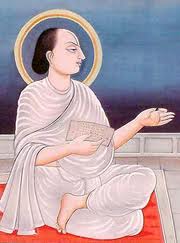 The Vallabhacharins form a very important sect in Bombay, Gujarat and
the Central India. Their founder was born in the forest Champaranya in
1479. He is regarded as an incarnation of Krishna. The Vallabhacharins
worship Krishna, as Bala-Gopala. Their idol is one representing Krishna
in his childhood till his twelfth year. The Gosains or teachers are
family men. The eight daily ceremonials for God in the temples are
Mangala, Sringara, Gvala, Raja Bhoga, Utthapana, Bhoga, Sandhya and
Sayana. All these represent various forms of adoration of God.
The Vallabhacharins form a very important sect in Bombay, Gujarat and
the Central India. Their founder was born in the forest Champaranya in
1479. He is regarded as an incarnation of Krishna. The Vallabhacharins
worship Krishna, as Bala-Gopala. Their idol is one representing Krishna
in his childhood till his twelfth year. The Gosains or teachers are
family men. The eight daily ceremonials for God in the temples are
Mangala, Sringara, Gvala, Raja Bhoga, Utthapana, Bhoga, Sandhya and
Sayana. All these represent various forms of adoration of God. 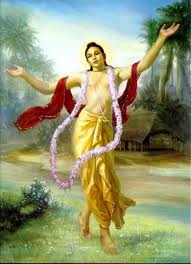 He took Sannyasa at the age of twenty-four.
He went to Jagannath where he taught Vaishnava doctrines.
He took Sannyasa at the age of twenty-four.
He went to Jagannath where he taught Vaishnava doctrines. 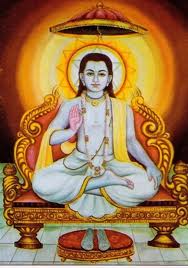 worship Krishna and Radha conjointly. Their chief
scripture is the Srimad-Bhagavata Purana.
worship Krishna and Radha conjointly. Their chief
scripture is the Srimad-Bhagavata Purana. 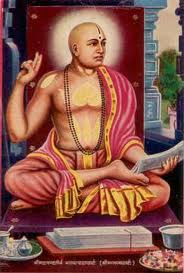 The Madhvas are Vaishnavas. They are known as Brahma Sampradayins.
The founder of the sect is Madhvacharya, otherwise called Ananda Tirtha
and Purna-Prajna. He was born in 1200. He was a great opponent of
Sankaracharya’s Advaita system of philosophy. He is regarded as an
incarnation of Vayu or the Wind-God. He erected and consecrated at Udipi
the image of the Lord Krishna.
The Madhvas are Vaishnavas. They are known as Brahma Sampradayins.
The founder of the sect is Madhvacharya, otherwise called Ananda Tirtha
and Purna-Prajna. He was born in 1200. He was a great opponent of
Sankaracharya’s Advaita system of philosophy. He is regarded as an
incarnation of Vayu or the Wind-God. He erected and consecrated at Udipi
the image of the Lord Krishna. 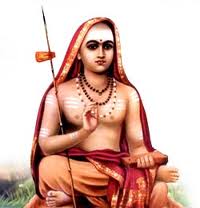
 They are called Vira Saivas. They are found in Mysore and Karnataka.
They wear on their neck a Linga of the Lord Siva put in a small silver
box.
They are called Vira Saivas. They are found in Mysore and Karnataka.
They wear on their neck a Linga of the Lord Siva put in a small silver
box.  The founder of the Arya Samaj was Swami Dayananda Sarasvati, who was
born in Kathiawar in 1824. This Samaj is more of a social institution,
with a religious background. It has Gurukulas, schools and Pathasalas.
The Suddhi Sabha is a proselytising branch of the Arya Samaj.
The founder of the Arya Samaj was Swami Dayananda Sarasvati, who was
born in Kathiawar in 1824. This Samaj is more of a social institution,
with a religious background. It has Gurukulas, schools and Pathasalas.
The Suddhi Sabha is a proselytising branch of the Arya Samaj.  Nagas are Saiva Sannyasins. They are in a naked state. They smear
their bodies with ashes. They have beard and matted locks.
Nagas are Saiva Sannyasins. They are in a naked state. They smear
their bodies with ashes. They have beard and matted locks.  Guru Nanak’s order of ascetics are called Udasis. They correspond to
Sannyasins and Vairagis. They are indifferent to the sensual pleasures
of this world (Udasina). Hence they are called Udasis.
Guru Nanak’s order of ascetics are called Udasis. They correspond to
Sannyasins and Vairagis. They are indifferent to the sensual pleasures
of this world (Udasina). Hence they are called Udasis.  Kabir Panthis are the followers of saint Kabir. They are numerous in
all the provinces of Upper and Central India. There are twelve branches.
Kabir Chaura is at Varanasi. It is a big monastery of Kabir Panthis.
Dharamdas was the chief disciple of Kabir. The followers are expected to
have implicit devotion to the Gurus, in thought, word and deed. They
should practise truthfulness, mercy, non-injury and seclusion. The
followers of Kamal, son of Kabir, practise Yoga.
Kabir Panthis are the followers of saint Kabir. They are numerous in
all the provinces of Upper and Central India. There are twelve branches.
Kabir Chaura is at Varanasi. It is a big monastery of Kabir Panthis.
Dharamdas was the chief disciple of Kabir. The followers are expected to
have implicit devotion to the Gurus, in thought, word and deed. They
should practise truthfulness, mercy, non-injury and seclusion. The
followers of Kamal, son of Kabir, practise Yoga. 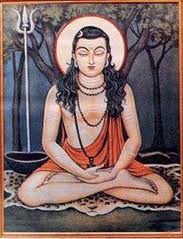 Gorakhnath was a contemporary of Kabir. He is regarded as the
incarnation of Lord Siva. He calls himself as the son of Matsyendranath
and grandson of Adinath. There is a temple of Gorakhnath at Gorakhpur in
Uttar Pradesh. Bhartrihari was a disciple of Gorakhnath.
Gorakhnath was a contemporary of Kabir. He is regarded as the
incarnation of Lord Siva. He calls himself as the son of Matsyendranath
and grandson of Adinath. There is a temple of Gorakhnath at Gorakhpur in
Uttar Pradesh. Bhartrihari was a disciple of Gorakhnath. 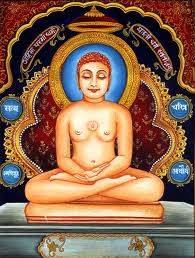 Jain
doctrine teaches that Jainism has always existed and will always exist,
although historians date the foundation of organized or the present form
of Jainism to sometime between the 9th and the 6th century BCE.
Jain
doctrine teaches that Jainism has always existed and will always exist,
although historians date the foundation of organized or the present form
of Jainism to sometime between the 9th and the 6th century BCE.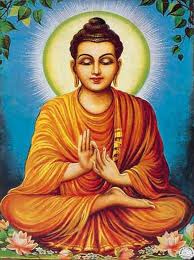 Buddhism
is a philosophy encompassing a variety of traditions, beliefs and
practices, largely based on teachings attributed to Siddhartha Gautama,
commonly known as the Buddha (Pāli/Sanskrit "the awakened one"). The
Buddha lived and taught in the northeastern Indian subcontinent some
time between the 6th and 4th centuries BCE. He is recognized by
Buddhists as an awakened or enlightened teacher who shared his insights
to help sentient beings end ignorance (avidyā) of dependent origination,
thus escaping what is seen as a cycle of suffering and rebirth.
Buddhism
is a philosophy encompassing a variety of traditions, beliefs and
practices, largely based on teachings attributed to Siddhartha Gautama,
commonly known as the Buddha (Pāli/Sanskrit "the awakened one"). The
Buddha lived and taught in the northeastern Indian subcontinent some
time between the 6th and 4th centuries BCE. He is recognized by
Buddhists as an awakened or enlightened teacher who shared his insights
to help sentient beings end ignorance (avidyā) of dependent origination,
thus escaping what is seen as a cycle of suffering and rebirth.